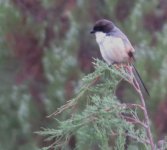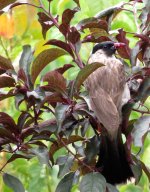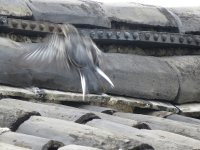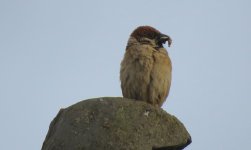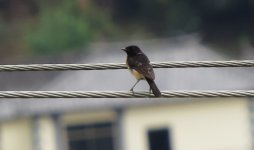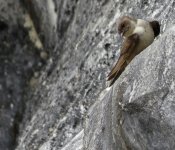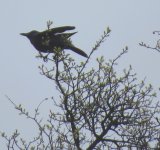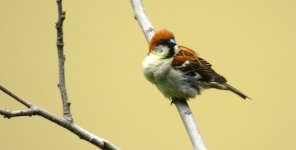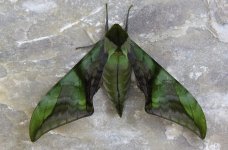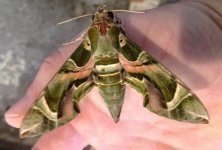MKinHK
Mike Kilburn

Last weekend I went with my sister and nine-year-old niece to Lijiang in northern Yunnan. We chose Lijiang because the city is up on the edge of the Tibetan plateau at 2400metres and is pleasantly cool with low humidity, unpolluted and mosquito-free, making it an ideal break from the humid and sometimes smoggy fug that characterizes Hong Kong’s summers.
We flew in on China Eastern, who were so tight they did not turn on the aircon while the plane was delayed for an hour on the ground. It is worth noting that Lijiang has no international customs and immigration facilities, so we had to do that in Kunming, adding a further hour to the trip.
While the main aim of the trip was for my niece to practice her Chinese, I did get a few hours of early morning birding close to our B&B on three mornings, plus a day trip to the Tiger Leaping Gorge, which delivered a few more good birds. I did not have the time to go chasing after the real quality birds here – Biet’s Laughingthrush which has been seen an hour to he north of Lijiang and Yunnan and Giant Nuthatches (both of which I’ve seen previously on Elephant Hill in 2003), which abuts the Black Dragon Pool on the northern edge of the old town.
We arrived in Lijiang on Friday evening and were met by a taxi (100RMB) to the excellent Bruce Chalet, a B&B set in a beautiful garden on the SW corner of Shuhe, a smaller bt equally beautiful town just to the north of the city. When I woke up in the morning and looked out from the sun terrace the first birds to appear were a couple of juvenile White Wagtails, which clearly liked the hotel and were always around.
The recently harvested fallow fields just outside the gate held a delightfully approachable flock of 25-odd Black-headed Greenfinches, a pair of Grey-backed Shrikes, a couple of dozen Barn Swallows, a few Collared Doves and three or four pairs of Black-faced Buntings. Both Brown-breasted and Sooty-headed Bulbuls were always around, along with a mess of Tree Sparrows and a solitary Hoopoe. I also saw many of these birds in and around the garden of the hotel during our midday pit-stops.
More to come . . .
Cheers
Mike
We flew in on China Eastern, who were so tight they did not turn on the aircon while the plane was delayed for an hour on the ground. It is worth noting that Lijiang has no international customs and immigration facilities, so we had to do that in Kunming, adding a further hour to the trip.
While the main aim of the trip was for my niece to practice her Chinese, I did get a few hours of early morning birding close to our B&B on three mornings, plus a day trip to the Tiger Leaping Gorge, which delivered a few more good birds. I did not have the time to go chasing after the real quality birds here – Biet’s Laughingthrush which has been seen an hour to he north of Lijiang and Yunnan and Giant Nuthatches (both of which I’ve seen previously on Elephant Hill in 2003), which abuts the Black Dragon Pool on the northern edge of the old town.
We arrived in Lijiang on Friday evening and were met by a taxi (100RMB) to the excellent Bruce Chalet, a B&B set in a beautiful garden on the SW corner of Shuhe, a smaller bt equally beautiful town just to the north of the city. When I woke up in the morning and looked out from the sun terrace the first birds to appear were a couple of juvenile White Wagtails, which clearly liked the hotel and were always around.
The recently harvested fallow fields just outside the gate held a delightfully approachable flock of 25-odd Black-headed Greenfinches, a pair of Grey-backed Shrikes, a couple of dozen Barn Swallows, a few Collared Doves and three or four pairs of Black-faced Buntings. Both Brown-breasted and Sooty-headed Bulbuls were always around, along with a mess of Tree Sparrows and a solitary Hoopoe. I also saw many of these birds in and around the garden of the hotel during our midday pit-stops.
More to come . . .
Cheers
Mike
Attachments
-
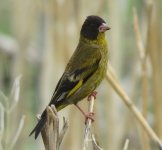 IMG_5885 Black-headed Greenfinch (m) @ Shuhe.JPG142.9 KB · Views: 55
IMG_5885 Black-headed Greenfinch (m) @ Shuhe.JPG142.9 KB · Views: 55 -
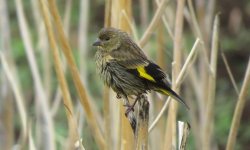 IMG_6031 Black-headed Greenfinch (f) @ Shuhe.JPG142.8 KB · Views: 50
IMG_6031 Black-headed Greenfinch (f) @ Shuhe.JPG142.8 KB · Views: 50 -
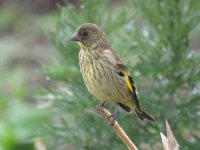 IMG_6045 Black-headed Greenfinch (juv) @ Shuhe.JPG145.1 KB · Views: 42
IMG_6045 Black-headed Greenfinch (juv) @ Shuhe.JPG145.1 KB · Views: 42 -
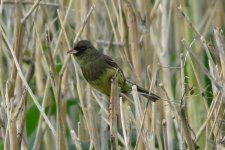 IMG_6055 Black-faced Bunting sordida (m) @ Shuhe.JPG193.4 KB · Views: 50
IMG_6055 Black-faced Bunting sordida (m) @ Shuhe.JPG193.4 KB · Views: 50 -
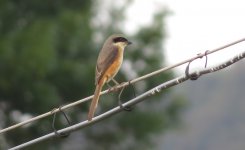 IMG_5839 Grey-backed Shrike @ Shuhe .JPG125.6 KB · Views: 60
IMG_5839 Grey-backed Shrike @ Shuhe .JPG125.6 KB · Views: 60
Last edited:




